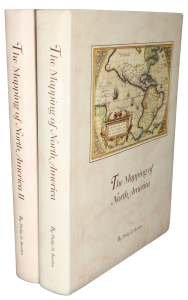Rare Maps and Prints
- World & Celestial
- North America
- West Indies, South & Central America
- British Isles
- British Isles
- English counties
- Large-scale
- Bedfordshire
- Berkshire
- Buckinghamshire
- Cambridgeshire
- Cheshire
- Cornwall
- Cumberland
- Derbyshire
- Devon
- Dorset
- Durham
- Essex
- Gloucestershire
- Hampshire
- Herefordshire
- Hertfordshire
- Huntingdonshire
- Islands
- Kent
- Lancashire
- Leicestershire
- Lincolnshire
- Middlesex
- Norfolk
- Northamptonshire
- Northumberland
- Nottinghamshire
- Oxfordshire
- Rutland
- Shropshire
- Somerset
- Staffordshire
- Suffolk
- Surrey
- Sussex
- Warwickshire
- Westmoreland
- Wiltshire
- Worcestershire
- Yorkshire
- Wales
- Scotland
- Ireland
- Western Europe
- Eastern Europe
- Middle East
- Africa
- Asia
- Australasia & Pacific
- Decorative Prints
- Title Pages
Mr. Philip D. Burden
P.O. Box 863,
Chalfont St. Giles, Bucks HP6 9HD,
UNITED KINGDOM
Tel: +44 (0) 1494 76 33 13
Email: enquiries@caburden.com
A view across a valley at Dover Castle with the town in between. Two figures in the foreground stand beside a monolith. First state of two. In the annals of English copper plate engraving few hold such a high reputation as Wenceslaus Hollar. It is the seventeenth century in which he contributed so much. He is one of the first to record in such great detail and quantity the English way of life at the time. The breadth and depth of his work is remarkable.
He was born in Prague 13 July 1607 as Václav Hollar which he would later anglicise. His childhood was a life of some privilege which enabled him access to some of the finest art works of the era including that of the principal court engraver Aegidius Sadeler with whom it is believed Hollar learnt to engrave. Hollar’s early work was in Prague but the turmoil at home encouraged him to go to Stuttgart, Germany in 1627. Two years later he appears to have moved further west to Strasbourg. His natural talent flourished alongside the likes of Jan van de Velde and shortly after Matthaus Merian in Frankfurt. He worked all along the River Rhine including the Dutch towns.
It was in 1636 that a fortuitous meeting occurred with the English envoy Thomas Howard, the Earl of Arundel. Hollar joined the entourage and was employed to record their travels. At the end of the year the Earl of Arundel returned to England and was joined by Hollar. For the next six years he worked closely alongside him. The Earl and his circle were fervent Royalists which it appears matched Hollar’s own sympathies. According to the eighteenth century engraver George Vertue he fought during the Civil War being present at the garrison of Basing House in 1644 with other notable artists such as Inigo Jones and William Faithorne. During this period some of his engravings were published by the largest printseller at the time Peter Stent.
The Arundel’s had left London for Holland just before the outbreak of the Civil War. Sometime later in 1644 Hollar joined them. He would spend the next eight years in Antwerp about which we know relatively little. Life in Antwerp became difficult and he was enticed back to England. Two reasons for this are believed to be the Act of Pardon of 1652 removing the threat of prosecution of Royalists and quite possible the offer of work by William Dugdale, the Antiquary. Some of his most important work was done prior to the Great Fire of London as he is one of the very few visual sources of the buildings before their destruction. Griffiths & Kesnerová (1983); Pennington (1982) 929.i.
He was born in Prague 13 July 1607 as Václav Hollar which he would later anglicise. His childhood was a life of some privilege which enabled him access to some of the finest art works of the era including that of the principal court engraver Aegidius Sadeler with whom it is believed Hollar learnt to engrave. Hollar’s early work was in Prague but the turmoil at home encouraged him to go to Stuttgart, Germany in 1627. Two years later he appears to have moved further west to Strasbourg. His natural talent flourished alongside the likes of Jan van de Velde and shortly after Matthaus Merian in Frankfurt. He worked all along the River Rhine including the Dutch towns.
It was in 1636 that a fortuitous meeting occurred with the English envoy Thomas Howard, the Earl of Arundel. Hollar joined the entourage and was employed to record their travels. At the end of the year the Earl of Arundel returned to England and was joined by Hollar. For the next six years he worked closely alongside him. The Earl and his circle were fervent Royalists which it appears matched Hollar’s own sympathies. According to the eighteenth century engraver George Vertue he fought during the Civil War being present at the garrison of Basing House in 1644 with other notable artists such as Inigo Jones and William Faithorne. During this period some of his engravings were published by the largest printseller at the time Peter Stent.
The Arundel’s had left London for Holland just before the outbreak of the Civil War. Sometime later in 1644 Hollar joined them. He would spend the next eight years in Antwerp about which we know relatively little. Life in Antwerp became difficult and he was enticed back to England. Two reasons for this are believed to be the Act of Pardon of 1652 removing the threat of prosecution of Royalists and quite possible the offer of work by William Dugdale, the Antiquary. Some of his most important work was done prior to the Great Fire of London as he is one of the very few visual sources of the buildings before their destruction. Griffiths & Kesnerová (1983); Pennington (1982) 929.i.
HOLLAR, Wenceslaus
Dover
London, c.1650
63 x 135 mm., laid on paper.
Stock number: 6308
SOLD






